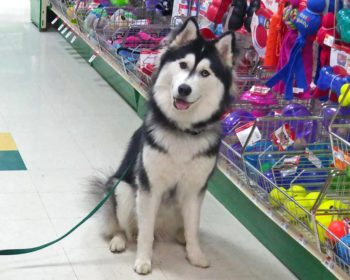Aggression or Frustration?
I’ve been thinking a lot lately about the “dog reactive” dogs. We see a lot of them. I don’t use “dog aggressive” to describe these particular dogs… because they aren’t. Yes, some dogs are aggressive to other dogs, but that’s not who I’m talking about.
These “dog reactive” dogs act over the top when they see other dogs in controlled situations, such as on walks. Barking. Lunging. Yanking on the leash. Generally carrying on. Indeed, the dog can appear very mean.
leash. Generally carrying on. Indeed, the dog can appear very mean.
But many of these dogs play off leash at the lake with their dog buddies. Several of them practice appropriate play at doggy daycare.
Oftentimes what we are seeing here is the dog’s frustration. When the dog is young, they want to say hello to the other dog. Sometimes they get to. And that’s fun! As they get older, they don’t always get to sniff the other dog. But they WANT TO. So gradually that “hi there!” turns into “grrr.” The frustration is caused by the leash, but the dog shows that frustration by barking at the other dog. Because that’s an easier target than the leash.
And once this “barking at another dog” behavior happens a few times, well meaning humans tend to make the problem worse.
The owner sees another dog on a walk, gets nervous, and shortens the leash in an attempt to control their dog. But, dogs are masters at reading human emotions. So the owner’s nervousness often causes the dog to search for the thing. “There it is! It’s that dog! WOOF WOOF WOOF!”
And that shortened leash? That can cause a problem, too. For your average pet dog, a tight leash tugging on their collar (or harness), causes them to pull harder.
Dogs have oppositional reflex. If you pull on them, they pull back. (Humans do this too. If my kid grabs my arm to get my attention, my first instinct is to pull my arm away, not to follow her.)
So how do we work on this “dog reactivity”? Teach the dog to focus on the owner. Help the owner learn to relax. Teach the dog that the leash is there to help you, not just to hold you back. Cut down on that frustration. Set the dog up to succeed. Help the owner and the dog to work as a team.
Easy? Not usually. But much easier with the help of a trainer who has a plan.
One more important point here. While I love for dogs to practice appropriate play, it is also very important to balance this time. It’s important for your dog to practice focusing on you while around other dogs. Because if you start this early, you can avoid the dog’s frustration spiral. It becomes normal: sometimes we play with other dogs, sometimes we don’t.
Balance, my friends. It’s all about balance.




